What To Expect From AMD's 7nm Roadmap In 2019
With new announcements at Computex 2019, AMD provides a more complete picture of its 2019 7-nanometer roadmap, spanning CPUs and GPUs for desktops and servers. Here's what the channel needs to know about AMD's upcoming 7nm Ryzen, Radeon and EPYC products.
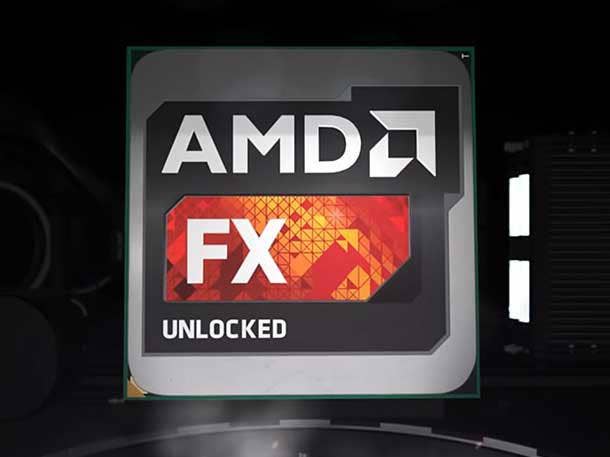
2019 Brings New AMD 7nm CPUs, GPUs
We now know a lot more about AMD's 7-nanometer product roadmap this year, thanks to the chipmaker's recent announcements at Computex in Taiwan.
The 7nm product roadmap refers to CPUs and GPUs made by AMD that use a next-generation manufacturing process that increases the density of transistors on processors, allowing for improvements in both performance and energy efficiency. Currently, most of the company's processors are based on either a 12nm or 14nm manufacturing process.
[Related: Intel's 10th-Gen Core CPUs: 5 Things To Know About The 10nm Chips ]
After years of research and development and work with external foundries, AMD is finally on the runway for its first major 7nm releases. AMD CTO Mark Papermaster told CRN last year that the company's "immense focus" has allowed it to not only stay on schedule but move even faster.
"We knew 7nm would be a big challenge, so we made the bet, we shifted our resources onto the new node," he said. "We didn't just dip our toe in the water. We went all in."
The Santa Clara, Calif.-based company has already released its 7nm Radeon Instinct GPU for data centers and its high-end 7nm Radeon VII GPU for desktops. Now it's only months away from releasing new 7nm Ryzen CPUs for desktop, new 7nm Radeon RX GPUs for desktop and new 7nm EPYC CPUs for servers. What follows is a roundup of the most important details of AMD's 7nm roadmap in 2019.

Zen 2 Architecture For Next-Gen Ryzen, EPYC
At AMD's Next Horizon event last fall, the company revealed Zen 2 as the successor to its Zen processor architecture, which has been serving as the foundation for the company's current Ryzen and EPYC CPUs.
With Zen 2, the company is promising double the core density while using half the power with a 1.25X improvement in performance. At Computex, the company provided an update on what kind of architectural improvements Zen 2 will bring, saying that it will boost the instructions per clock by up to 15 percent over the previous Zen architecture.
The company said the Zen 2 core features "significant design improvements, including larger cache sizes and a redesigned floating-point engine."
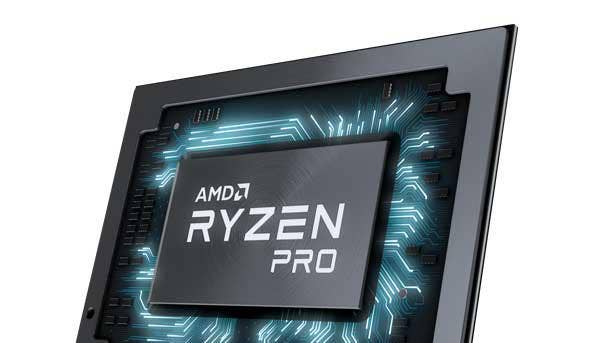
Ryzen 3000 Processors
AMD announced at Computex that its third-generation Ryzen processors, also known as the Ryzen 3000 series, will launch for desktop computers on July 7.
The processors, which are based on the 7nm manufacturing process, are headlined by the Ryzen 9 3900X, which will come with 12 cores, 24 threads, 4.6 GHz boost frequency and a 105-watt thermal design power rating for $499. The four other processors are as follows: the Ryzen 7 3800X (eight cores, 16 threads, 4.5 GHz, 105W TDP at $399), the Ryzen 7 3700X (eight cores, 16 threads, 4.4 GHz, 65W TDP at $329), the Ryzen 5 3600X (six cores, 12 threads, 4.4 GHz, 95W TDP at $249), and the Ryzen 5 3600 (six cores, 12 threads, 4.2 GHz, 65W TDP at $299).
They all come with support for 40 PCIe 4.0 lanes, when combined with AMD's new X570 motherboard chipset. The Ryzen 9 3900X comes with a total cache of 70 MB while the Ryzen 5 3600 is half that.
Across different comparisons, AMD said the new processors could provide better or similar performance to Intel's processors while costing less.
New desktop systems with the new Ryzen processors are coming out from Acer, Asus, CyberpowerPC, HP, Lenovo and Maingear in the next few months.
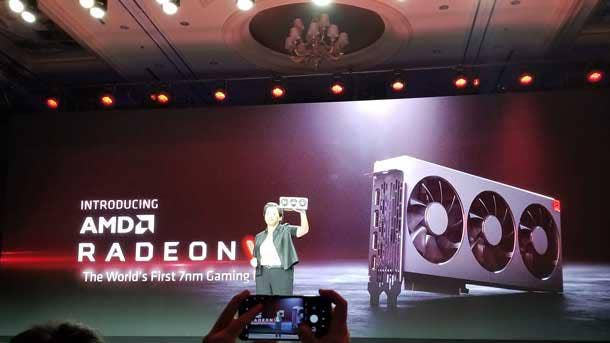
Radeon RX 5000 GPUs
The chipmaker also announced at Computex that its first Radeon "Navi" graphics cards, dubbed the Radeon RX 5000 series, will launch in July.
AMD did not share as many details on the Radeon RX 5700, the first graphics card that is set to release as part of the new lineup. What the company did say, however, is that the Radeon ER 5700 series will feature GDDR6 memory and PCIe 4.0 support. The company demonstrated that the forthcoming graphics card can outperform Nvidia's GeForce RTX 2070.
The company said the Radeon RX 5000 is based on its new RDNA GPU architecture, which AMD called "the next foundational gaming architecture." With promised improvements in performance, power and memory efficiency in a smaller package compared to the previous generation architecture, the company is promising a higher performance-per-clock by 1.25X and a higher performance-per-watt by 1.5X.
The chipmaker has not said whether the new graphics card will feature ray tracing, a next-generation rendering technique that realistically renders light and reflections, but AMD CEO Lisa Su reportedly said that the technology is seen as a "very important element" across the company's portfolio.
AMD plans to share more details at the E3 video game convention on June 10.
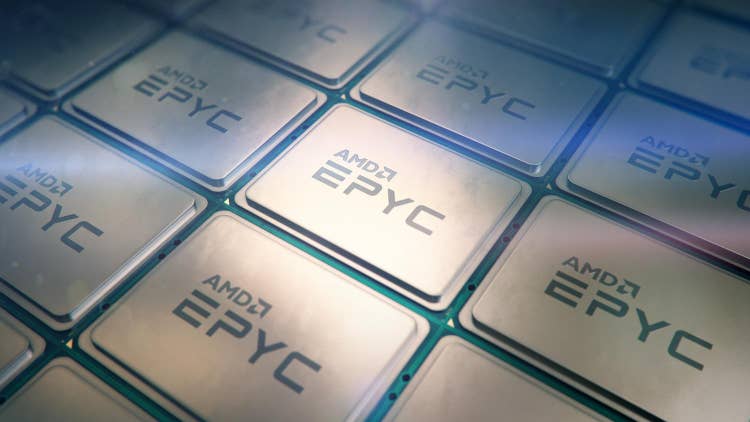
EPYC 'Rome' Processors
AMD said in April that its second-generation EPYC "Rome" server processors will start shipping in the second quarter in anticipation of a third-quarter launch.
The chipmaker has been escalating the hype for the EPYC Rome since its Next Horizon event last fall, when it revealed that the processor will pack up to 64 cores and 128 threads, with increased instructions per cycle and double the performance per socket. AMD said EPYC Rome will be the industry's first PCIe 4.0-capable x86 server processor and provide double the bandwidth per channel.
At Computex, the company provided a live demonstration comparing a dual-socket, second-generation AMD EPYC-based server with a dual-socket Intel Xeon 8280-based server, which showed that AMD's server outperformed Intel by more than a factor of two using the NAMD benchmark. Intel, however, reportedly contested AMD's claims, saying that AMD did not properly configure the Intel Xeon server, which would diminish EPYC Rome's performance gains over Xeon 8280.
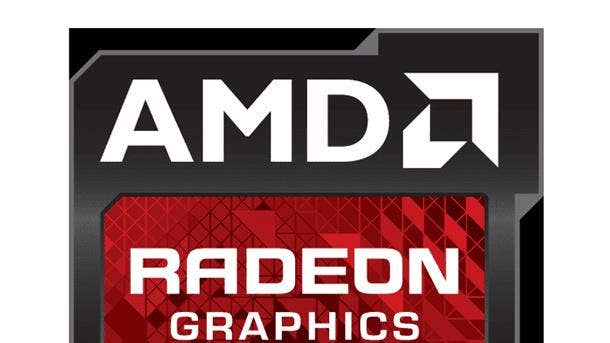
Radeon VII, Radeon Instinct GPUs
The Radeon VII graphics card for desktops and Radeon Instinct MI50 and MI60 GPUs for the data center were AMD's first 7nm products that were introduced over the last several months.
AMD revealed Radeon VII as the world's first 7nm gaming GPU at CES in January. The graphics card went on sale shortly after for $699 on Feb. 7. The high-end graphics card, which is based on AMD's Vega architecture, features 60 execution units running up to 1.8 GHz, 16 GB of high-bandwidth memory and 1 TB/second in memory bandwidth.
The company has said this means Radeon VII provides two times the memory, two times the memory bandwidth, up to 29 percent higher gaming performance and up to 36 percent higher content creation performance compared to its previous top-of-the-line Radeon RX Vega 64 graphics card.
AMD's Radeon Instinct MI50 and MI60 data center GPUs were revealed at the company's Next Horizon event last fall, when the company said they would feature two times the density and a 1.25X performance gain over the company's previous top-line GPUs while using 50 percent less power.
The Radeon Instinct MI60 comes with 32 GB of second-generation High-Bandwidth Memory, enabling up to 1 TB/s in memory bandwidth speeds. Thanks to its PCIe 4.0 support, it's also capable of delivering up to 7.4 teraflops in double precision (FP64) performance.
The Radeon Instinct MI60 started shipping in the fourth-quarter of 2018 while the Radeon Instinct MI50 started shipping in the first quarter of this year.